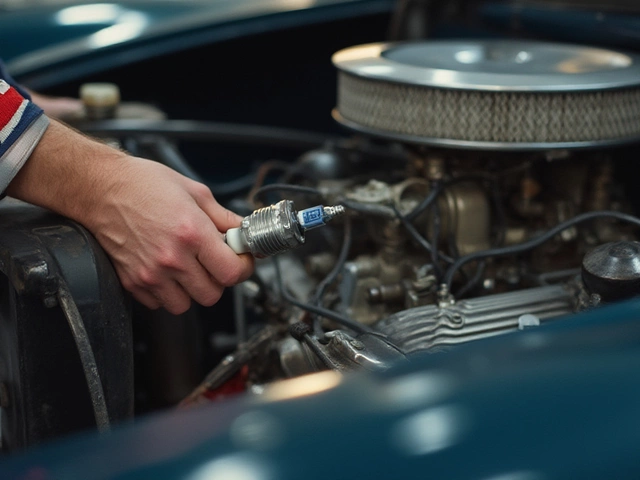People rave about synthetic oil. It's supposed to last longer, protect your engine better, and keep things running smooth. Sounds great, right? But hang on—before you shell out extra cash for that fancy bottle of oil, you should know it’s not perfect. There are some real downsides that could make you think twice.
First thing you'll notice is the price tag. Synthetic oil is usually two or three times the cost of regular oil. That's a big jump, especially if you have an older car or you’re trying to stick to a budget. Sure, it lasts longer, but you’re paying upfront—and sometimes that added cost doesn't pay off if you don’t drive tons of miles each year.
- Why Some Drivers Choose Synthetic Oil
- The Price Tag—Is It Worth It?
- Leakage Worries in Older Cars
- Additive Breakdown and Engine Deposits
- Compatibility Problems with Some Engines
- Should You Switch? Tips for Everyday Drivers
Why Some Drivers Choose Synthetic Oil
If you chat with folks at any auto shop, you'll almost always hear how popular synthetic oil has become. It’s not hype—there are some real advantages that make drivers reach for those pricier bottles.
Synthetic oil is made in a lab, not just pumped out of the ground and filtered. That means it's built to be cleaner, more stable, and way better at handling extreme temperatures. For people living where summers get blazing hot or winters drop deep below freezing, synthetic is less likely to break down or thicken up.
One big reason people pick synthetic is the driving routine. If you’re putting lots of highway miles on your car or hauling heavy loads (like that summer road trip with the kids or towing a boat), synthetic oil keeps its protection longer. While conventional oil might call it quits after 3,000 miles, most synthetic oils can safely go 5,000 to 7,500 miles—or even more with some brands. There’s less sludge build-up, and that means cleaner engines over time.
- Improved engine protection at high and low temperatures.
- Longer oil change intervals (sometimes twice as long as regular oil).
- Lower chance of engine deposits forming inside the motor.
- Better fuel economy in some cars, since synthetics can reduce friction.
If you’re a stats kind of person—or just want the hard numbers—check this out:
| Feature | Synthetic Oil | Conventional Oil |
|---|---|---|
| Typical Oil Change Interval | 7,500 miles | 3,000 miles |
| Temperature Resistance | -40°F to 500°F | -20°F to 400°F |
| Engine Deposit Build-Up | Less likely | More likely |
| Price per Quart | $7 - $15 | $4 - $7 |
Bottom line: People use synthetic oil for stuff like tough weather, heavy-duty driving, and cleaner engines. It’s especially popular among newer car owners, folks with turbocharged engines, or anyone pushing their engine hard on a regular basis. When you look at the long-term wear and tear, it’s easy to see the appeal—just don’t forget about that cost difference, which we’ll get into next.
The Price Tag—Is It Worth It?
Straight up, synthetic oil is expensive. A typical oil change with synthetic can cost between $70 and $120, compared to $30 to $50 for conventional oil. That's not a tiny difference. Most drivers with average cars or short commutes don’t always feel the benefit of stretching out oil changes just a little longer.
You might’ve heard claims that synthetic oil lets you go 7,500 to even 15,000 miles between changes. Sure, that sounds like a deal, but most car makers (Toyota, Ford, and many others) still suggest changing oil every 5,000 to 7,500 miles—whether it’s synthetic or regular. Plus, if your driving habits are rough on your engine (towing, stop-and-go traffic, extreme weather), you’re often told to change oil sooner anyway.
Check out the typical cost breakdown for a five-quart oil change in the table below:
| Oil Type | Average Cost (USD) | Suggested Change Interval |
|---|---|---|
| Conventional | $30–$50 | 3,000–5,000 miles |
| Blend (Semi-Synthetic) | $40–$70 | 5,000–7,500 miles |
| Synthetic | $70–$120 | 7,500–15,000 miles* |
*Interval often depends on the car, driving conditions, and what the owner’s manual says.
Here’s the bottom line. If you or your mechanic are strict about oil change intervals and you don’t put tons of miles on each year, you might not see big savings with synthetic. The money you pay upfront is real, and unless you really need the extended protection—like driving in extreme temps or pulling heavy trailers—it could be cash you never get back. Think about your own driving habits before switching just because everyone else is doing it.
Leakage Worries in Older Cars
If you’ve got an older ride—let’s say built before 2000—switching to synthetic oil can get tricky. Here’s something most people don’t tell you: synthetic oil is more “slippery” on a molecular level. That means it can sneak past worn-out seals and gaskets way easier than thicker conventional oil. Translation? Your old car might suddenly start leaving oil puddles in the driveway.
Back in the day, some brands of synthetic oil didn’t play nice with old rubber seals. The slickness or chemical makeup sometimes caused seals to shrink or dry out, opening up little leaks. While modern formulas are a lot gentler, the problem hasn’t vanished for cars with tired, original seals.
Here’s a quick comparison for how leak risks stack up in older engines:
| Oil Type | Chance of Leaks in 15+ Year Old Cars |
|---|---|
| Conventional Oil | Low to Moderate if seals are worn |
| Full Synthetic Oil | Moderate to High if seals are worn |
| Synthetic Blend | Moderate |
If your car already drips a little oil, going full synthetic could make that leak worse, at least at first. Some drivers are shocked to see a dry driveway suddenly get messed up after an oil change.
- Check your car’s seals—the rubber rings around the oil pan, valve covers, and crankshaft. If they’re dry, cracked, or hard, you’re at more risk.
- If you spot fresh leaks right after a switch, sometimes just replacing those old seals and gaskets fixes the problem.
- Look for synthetic oils labeled “high mileage”—these contain seal conditioners that can help shrink leaks by keeping seals soft.
Bottom line: don’t just assume your old car will love the upgrade. Give those seals a look before you pour in new oil, and consider consulting your mechanic if you’re not sure. Sometimes, sticking to regular oil until you fix those leaks is the smarter—and less messy—move.

Additive Breakdown and Engine Deposits
Synthetic oil uses a bunch of special additives. These are the good guys—detergents, dispersants, and anti-wear agents—all working to keep your engine clean and cut down on friction. Over time, though, these additives can start breaking down, and that’s where trouble sneaks in.
When the additives lose their punch, synthetic oil can actually let sludge and deposits build up. It doesn’t happen right away, but if you stretch your oil changes too far, you might see gunk forming in your engine. I’ve seen it firsthand when a buddy of mine tried pushing synthetic oil past the recommended mileage—he ended up with ugly brown sludge coating the inside of his valve cover.
Another thing to watch out for is that synthetic oils sometimes suspend contaminants better than regular oil. If you go way too long between oil changes, those suspended particles can clump together and settle as stubborn deposits. Think of it like dust gathering in the corners of your garage—leave it long enough, and suddenly you’ve got a pile that’s tough to clean out.
- Check your oil change intervals. Just because your oil is synthetic doesn’t mean you can ignore the schedule.
- Don’t mix brands or types unless your owner’s manual says it’s safe. Some additives don’t play well together.
- Watch out if your engine burns oil or has blow-by issues—additive breakdown speeds up when oil is contaminated.
If your engine already has a lot of miles or some internal wear, switching to synthetic oil won’t magically clean out old deposits. Sometimes, the switch can even loosen sludge, causing those chunks to float around and possibly block oil passages. So, before you make the jump, double-check your maintenance habits. Synthetic oil is great, but only if you use it the right way and don’t neglect routine service.
Compatibility Problems with Some Engines
Synthetic oil might sound like a great idea for every ride, but it just doesn't play nice with all engines. Older models are the biggest troublemakers here. Many cars built before the late '90s, especially those with flat tappet cams, may not react well to modern synthetic oil. The added slipperiness can be too much for certain types of seals and gaskets, leading to oil leaks. I had a buddy with an old '87 pickup; after switching to synthetic, he found little puddles under his truck every morning. Not fun.
Some made-for-racing engines and specialty high-mileage cars also have issues. Performance engines built with certain tolerances need specific types of oil friction. Too much slickness from synthetic oil can actually mess with how internal engine parts get lubricated, sometimes causing more wear instead of less. Manufacturers like Toyota and Honda sometimes list clear oil requirements in the owner's manual, warning drivers to stick with conventional oil for those older engines.
Diesel engines designed before 2000 can have issues too. Synthetics are less forgiving with high sulfur fuels and older seals. If you’re running a classic diesel for work or as a project, double-check whether your engine is up for the switch.
Here’s a quick look at which engines may struggle with synthetic oil:
- Classic cars with original gaskets and seals
- Engines with flat tappet camshafts (common in vehicles built before 1995)
- Some rotary engines (like the Mazda RX-7 and RX-8)
- Older diesel engines using high sulfur diesel fuel
Data from a 2023 industry report showed that about 12% of older cars experienced oil leaks after switching to synthetic oil, versus just 3% that stuck with conventional oil. Here’s a breakdown of common compatibility issues by engine type:
| Engine Type | Issue with Synthetic Oil | Recommended Action |
|---|---|---|
| Classic Gasoline (pre-1995) | Seal and gasket leaks | Stick with conventional oil or upgrade seals |
| Rotary Engines | Poor lubrication on apex seals | Use oil recommended by manufacturer |
| Old Diesel (pre-2000) | Additive incompatibility, leaks | Carefully check API rating |
| High-Performance Custom Builds | Too much slickness for custom tolerances | Consult builder for exact oil type |
If your car is newer or you have an owner’s manual handy, always check the oil specs it calls for. Most engines today are built for synthetics, but skipping this step can cost you in the long run. Not sure or have a rare ride? Ask a trusted mechanic who knows your car’s quirks. It's cheaper to double-check than to fix a leak later.
Should You Switch? Tips for Everyday Drivers
Deciding to swap over to synthetic oil isn’t something you do just because a clerk at the auto parts store says so. Everyday drivers need to weigh their real-world needs like cost, driving habits, and what their cars actually require. Synthetic oil works great for some, but not for everyone.
If you only drive to work and back, clocking a few thousand miles a year, you might not see much of a benefit. Synthetic oil really shines for folks who drive in extreme hot or cold, tow trailers, or log a ton of highway miles. The science backs this up—AAA found in 2017 that engines ran 47% cleaner on synthetic, but for basic city driving, the gains are barely noticeable and may not justify the extra cash.
Here’s a quick comparison to help you decide if switching is worth it:
| Factor | Synthetic Oil | Conventional Oil |
|---|---|---|
| Average Cost per Quart | $6-10 | $3-6 |
| Oil Change Interval | 7,500-15,000 miles | 3,000-5,000 miles |
| Protection at Extreme Temps | Excellent | Fair |
| Risk of Leaks in Older Engines | Higher | Lower |
| Engine Compatibility | May not suit older seals | Generally compatible |
If your car manual calls for synthetic, don’t argue—use it. Modern engines sometimes demand it, especially luxury or high-performance rides. But for an old Corolla or Civic just doing daily errands, stick to what’s recommended. Another tip: never mix synthetic and regular oil unless you’re truly in a pinch. Mixing reduces both oils’ benefits.
- Read your owner’s manual before switching. Some engines straight up need synthetic, others don’t.
- Price out a year’s worth of oil changes for each type—spreadsheets work way better than gut feelings.
- If your car is out of warranty or over ten years old, keep an eye for leaks if you try synthetic.
- For extreme cold or hot climates, synthetic might keep your engine happier in the long run.
- If you drive less than 5,000 miles a year, synthetic’s long change interval may not matter as much.
Bottom line? Don’t just buy into the hype. Run the numbers, look at your driving habits, and go with what really makes sense for your engine and your wallet.






